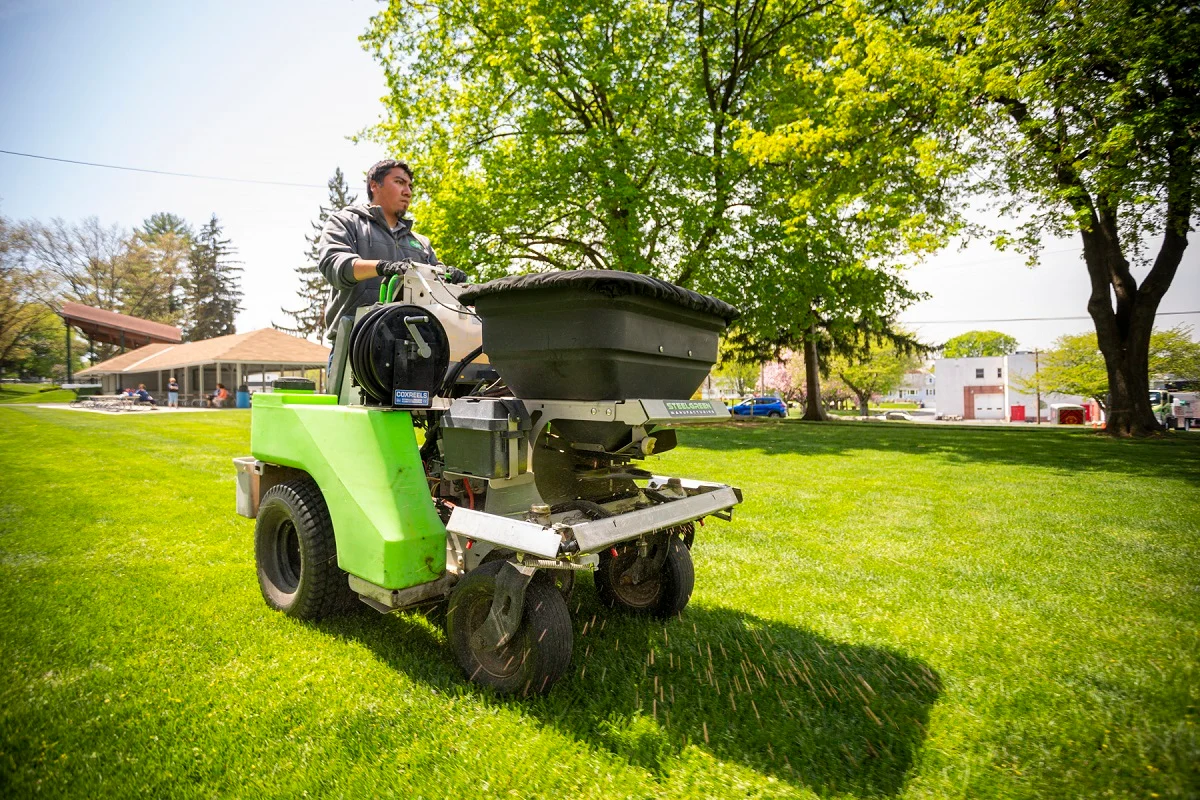Should I Water After Applying Fall Fertilizer?
Last Updated on November 17, 2025 by Duncan
Whether or not you should water your lawn after fall fertilization depends on the type of fertilizer you use. Some fertilizers are designed to be “watered in” and require additional moisture to deliver nutrients to your grass’s roots, while others don’t
If you don’t water after applying fertilizer, the fertilizer will sit on the grass blades and do nothing for your lawn. To be useful, the fertilizer must get into the soil. At the same time, failing to water after fertilization increases the risk of fertilizer burn.
If you apply granular fertilizer in the fall, water it as soon as possible since it requires water to activate. If you use liquid fertilizer, wait two to four hours before watering.
As much as you should water your fertilizer after applying it, avoid overwatering. This is because the fertilizer may wash away and become less effective. And you don’t want this, do you?
Fertilizer can also contaminate your local groundwater if you overwater. If your property is close to a water supply, such as a lake or river, the fertilizer can contaminate that source. To stay on the safe side, only water your yard as much as is necessary. Don’t overdo it.
Why should you apply lawn fertilizer in the fall?
It takes effort to maintain a lush, green lawn, but how and when you do it can have a significant impact on the outcome. Fertilizing in the fall has various advantages for your lawn over fertilizing in other seasons. These benefits include:
Provides essential nutrients ahead of the cold season.
Preparing your lawn for winter is critical to having lush green grass in the spring. Fertilization is an essential element of this process, as is proper watering, weed control, and ongoing upkeep.
Cold weather can be terrible on grass, but fertilization before the ground freezes allows your lawn to build stamina and durability.
Nitrogen and phosphorus nutrients help your grass grow stronger and healthier over the winter, resulting in a thick, brilliantly green lawn early when the seasons change.
Allows the grass to recover from summer
Lawns can tolerate a lot of wear and tear in the summer. Not only is the weather hot and dry, but you’ll be spending time outside appreciating your lawn.
This means that people walk, run, and play on your lawn all season, putting additional strain on the blades and root system.
If your grass does not receive after-summer recovery treatment, it may require further assistance to withstand the brutal winter. At best, your yard will not be fully developed and vivid when the snow melts in the spring.
At worst, you may encounter dead patches, grass diseases, and other costly and time-consuming issues to resolve.
Helps the fertilizer absorb better
Fall weather brings morning dew, which provides critical moisture to assist your lawn in absorbing the nutrients in the fertilizer. Instead of evaporating as soon as the sun rises, as it does in the summer, dew can condense and seep into the soil, carrying nutrients with it.
Because grass grows more slowly in the fall and focuses on root development, you have the ideal climate to nourish your grass and help it store more energy for the oncoming cold weather.
Promotes critical root growth
When summer ends, your lawn stops putting as much energy into producing grass and instead focuses on creating a strong root system. Giving your property an extra boost of nutrients promotes healthy root growth.
And because grass does not root deeply but spreads widely, safeguarding it from winter issues such as cold stress and snow mold is critical.
When should you fertilize your lawn in the fall?
The best time to fertilize your lawn is in the early fall, before temperatures drop too low and long before the first frost.
You want to give your lawn as much time as possible to absorb and utilize the nutrients in the fertilizer before the snow and ice fall. The soil will also have more nutrients, allowing your lawn to overwinter properly.
Each year, check the projected date of the first frost in your area and fertilize a few weeks ahead of time. If the first frost occurs in September, late August becomes the perfect time to fertilize ahead of the fall season.
You should also check the weather forecast and avoid fertilizing your lawn before heavy rains. This helps to prevent runoff, which can reach local water supplies and produce excessive algal development. Before applying fertilizer, your grass should be dry, so wait a day or two if it has just rained.
Mowing first allows the fertilizer to permeate into the grass’s root structure fully. Don’t scalp your lawn, though; it shouldn’t look too barren when the temps drop. If there isn’t enough grass to protect the roots, they may be injured by snow and ice accumulation.
Extreme cold can be enough to ruin a short grass, so mow carefully before fertilizing.
How much water should you apply after fertilizing?
In order to achieve the general rule of watering a lawn 1 to 2 inches per week, consider giving it a good “soaking” with deep waterings. The goal is to soak your lawn until the soil is moist to a few inches deep, which can take anywhere from 45 minutes to an hour, depending on your lawn and sprinkler system.
Of course, Mother Nature will hopefully handle some of the watering, but in most cases, homeowners tend to overestimate the amount of rain that actually fell. Using a rain gauge can be an efficient way to keep track of how much water your lawn is receiving during periods of rainfall.
If you’re currently using a hose and sprinkler system (and have to set a timer and move it around to cover your entire lawn), it can be stressful as it requires a lot of time and work.
As a result, many homeowners prefer the idea of a professional irrigation system, which eliminates the guesswork associated with watering the lawn. With an irrigation system, you can ensure that it is set to get just what your lawn requires.


